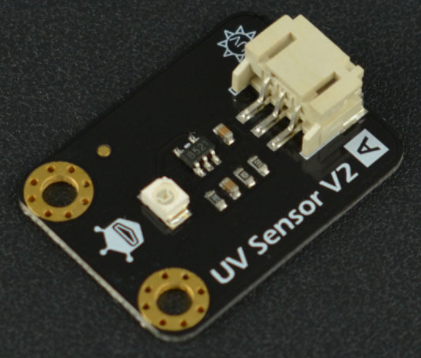This sensor measures the level of UV radiation in sunlight and creates an output voltage proportional to the UV index.
Specification
- Operating Voltage: 3.3-5V
- Output voltage: DC 0-1V(Corresponding 0-10 UV index)
- Operating Current: 0.06mA(0.1mA max)
- UV wavelength detect: 200-370nm
- Test accuracy: ±1UV INDEX
- Response time: <0.5s
- Operating temperature: -20℃-85℃
How does it work?
This sensor operates in the same way as the ambient light sensor except that instead of operating in the visible light frequency range of 380-700nm, it is sensitive to ultraviolet light in the frequency range 200-370nm.
The relationship between UV index and the photoelectric current generated by the photodiode is linear. In this sensor, the ultraviolet radiation falling on the photodiode generates a voltage between 0-1V which corresponds to a UV index between 0-10.
For this sensor, each point on the UV Index scale is equivalent to 20 milliwatts per square meter of UV radiation. This is the “Analog Value” in the table below.
Where are they used in real life?
This type of sensor is used for everyday measurement of UV in sunlight. The higher the UV index, the greater danger of harm to the human skin
Resources
The Australian Bureau of Meteorology issues regular advice of the UV index in your location.








